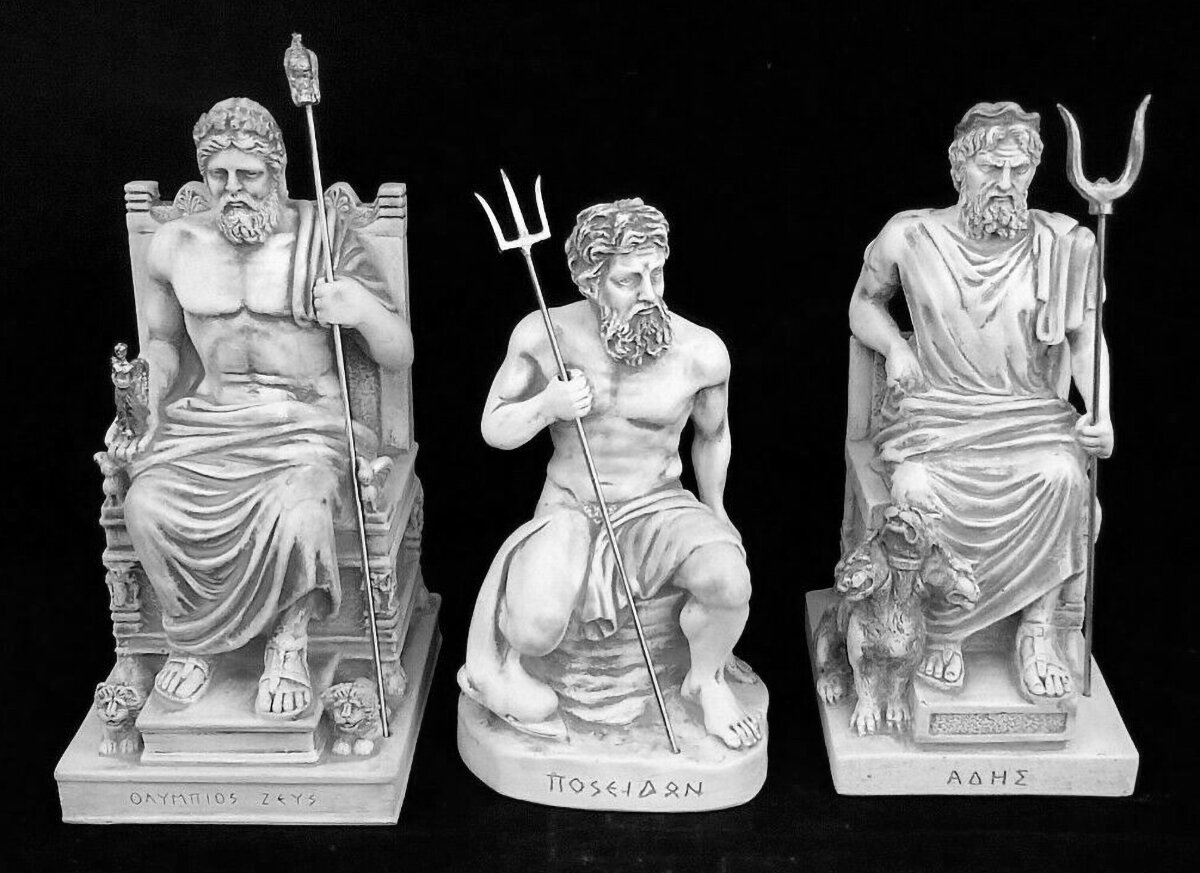Zeus, Poseidon and Hades : The Verticality of the Greek Gods
From left to right : the Greek gods Zeus, Poseidon and Hades. Image source.
Nearly all ancient belief systems are based on the surface, the underground, and the sky in some way. These three concepts represent something primal for humans, and throughout history we’ve attached myriad meanings and stories to the relationship between them. Typically, they’re either represented by an abstract concept or a god. An example of the former is the Christian idea of heaven and hell. An example of the latter is the Ancient Greek gods Zeus and Hades.
The Ancient Greeks were polytheistic, meaning they believed in many gods. Greek mythology tells the story of these gods, including their complex family trees and tales of their interactions with each other and humanity. At the heart of it all is Zeus, the father of the gods. He was a son of the titan Cronus, along with Poseidon and Hades. Together, these three brothers came to be associated with the sky, the surface, and the underground, respectively. As the story goes, when the world was divided among the three brothers, each got one part to rule over. In book XV of Homer’s epic poem The Iliad, Poseidon explains how it turned out:
We were three brothers whom Rhea bore to Cronus - Zeus, myself and Hades who rules the world below. Heaven and earth were divided into three parts, and each of us was to have an equal share. When we cast lots, it fell to me to have my dwelling in the sea forevermore. Hades took the darkness of the realms under the earth, while air and sky and clouds were the portion that fell to Zeus; but earth and great Olympus are the common property of all.
Through these concepts, the Greeks were attempting to explain their relationship with verticality. The surface represented the world of humanity, the sky was represented by Zeus, and the underground was represented by Hades. Mount Olympus was believed to be the home of the gods, and it acted as a link between the world of the gods and the world of humanity.
Illustration showing the Ancient Greeks’ main gods, including Zeus, Poseidon and Hades.
Like most ancient cultures, the Ancient Greeks were using myths and legends to explain what they didn’t understand. The surface is something every human understands and experiences, so there was no need to assign a god to it. It was physical and familiar. The underground and the sky were abstract, however, so each was made the dwelling of a god. As with almost every version of this duality, the sky is seen as a positive place, and one to aspire to, while the underground is seen as a negative place, and one to be avoided. This is a timeless duality, and humanity has grappled with it since time immemorial.
Check out other myths and legends that deal with flight here.


